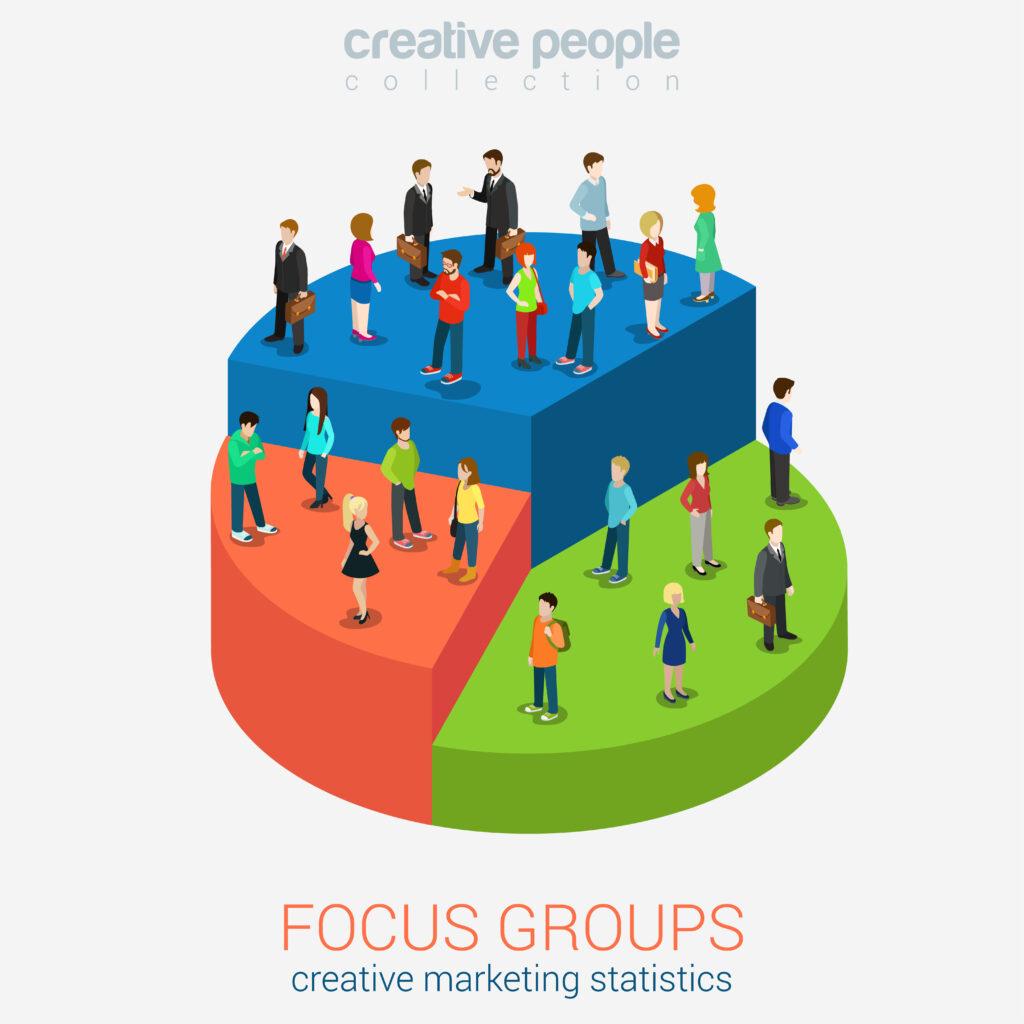Understanding Your Audience:
The Key to Successful Marketing

Throughout the realm of digital marketing, one principle consistently holds true: know your audience. Regardless of how innovative your campaigns might be, if you don’t comprehend who you’re addressing, your message won’t resonate.
It’s like shouting into a void, you’re expending energy and resources, but nobody’s listening because you’re not speaking their language or addressing their actual needs.
This is precisely why audience research and segmentation serve as the cornerstone of every successful marketing strategy. The ability to truly understand your customers separates thriving brands from those that struggle to gain traction.
When you grasp what makes your audience tick, their pain points, aspirations, preferences, and behaviors, you can craft messages that don’t just reach them, but genuinely connect with them on a deeper level.
Consider this: every scroll through social media, every search query, every product review read represents a person with unique desires, challenges, and motivations.
They’re not just data points or potential sales, they’re real individuals seeking solutions to real problems. The most successful brands recognize this humanity and tailor their approach accordingly.
They don’t blast generic messages hoping something sticks; instead, they engage in meaningful conversations that acknowledge individual needs and circumstances.
The marketing landscape has evolved dramatically. Gone are the days when businesses could rely on one-size-fits-all advertising and expect results.
Today’s consumers are savvier, more discerning, and have endless options at their fingertips. They can smell inauthenticity from a mile away and won’t hesitate to scroll past content that doesn’t speak directly to their situation. This shift demands a more sophisticated, nuanced approach to understanding who you’re trying to reach.
Let’s explore how to identify, understand, and engage with your target audience effectively in ways that drive real business results and create lasting relationships that transcend simple transactions.
Also read: The A/B Testing Formula: Marketing Success Made Simple

Audience as a Business Pillar
Your marketing audience represents the specific group of people most likely to be interested in your product or service. They are characterized by shared attributes such as age, interests, location, lifestyle, values, and behaviors. Think of them as the individuals who not only need what you offer but are also actively seeking solutions like yours.
Rather than attempting to market to “everyone,” successful brands concentrate on the right audience—people who are not only interested but also possess the potential to become loyal customers and brand advocates.
Casting a wide net might seem appealing, but it often leads to wasted resources and diluted messaging. The most effective marketing strategies focus on quality over quantity, targeting those who are genuinely predisposed to care about what you’re offering.
Understanding your audience isn’t just another marketing tactic—it’s a foundational pillar that supports every other aspect of your marketing strategy. Without this solid foundation, even the most creative campaigns, largest budgets, or innovative technologies will fail to deliver meaningful results.
Think of your marketing strategy as a building. Your audience understanding is the foundation upon which everything else is built.
Your messaging, content strategy, platform selection, budget allocation, and even product development should all stem from insights about who your audience is and what they need. When this foundation is weak or non-existent, the entire structure becomes unstable.
Also read: How to Find and Create Trending Content

Why Knowing Your Audience Very Matters
Better Communication
When you comprehend your audience’s language, tone, and preferences, your content feels natural and relatable. You’re not just broadcasting messages—you’re having conversations that matter.
For instance, the way you speak to Gen Z entrepreneurs will differ dramatically from how you communicate with corporate executives. Understanding these nuances ensures your messaging hits the mark every time.
Higher Engagement
Content that resonates leads to more likes, shares, comments, and clicks. When audiences see themselves reflected in your content, they’re compelled to interact with it.
Engaged audiences don’t just consume your content passively, they become active participants who amplify your message through their networks, effectively becoming unpaid ambassadors for your brand.
Cost Efficiency
Instead of squandering money on broad campaigns that reach uninterested viewers, you allocate resources toward people who are more likely to convert.
Every marketing dollar becomes more effective when directed at the right audience. This targeted approach can reduce budget of your customer acquisition costs significantly while improving your return on investment.
Why pay to reach a million people when reaching ten thousand of the right people delivers better results?
Stronger Relationships
Audiences who feel understood are more inclined to trust your brand and remain loyal. When customers believe you “get them,” they develop emotional connections that transcend transactional relationships.
These bonds lead to repeat purchases, positive word-of-mouth referrals, and a willingness to forgive occasional missteps because they trust your intentions.
Also read: The Small Business Guide to Lead Generation That Works

How to Identify Your Target Audience
1. Analyze Your Current Customers
Examine your existing customer base and look for patterns:
– Who purchases from you most frequently?
– What are their demographics (age, gender, location, income level)?
– What motivates their purchase decisions and triggers buying behavior?
– What problems are they solving with your product?
– How did they discover your brand?
Your current customers provide invaluable clues about who your ideal audience should be. They’ve already voted with their wallets, making them the perfect starting point for understanding your target market.
2. Use Data & Analytics
Tools like Google Analytics, Facebook Audience Insights, Instagram Analytics, and CRM data can reveal valuable details about website visitors and followers. These platforms offer treasure troves of information including:
– Peak activity times and days
– Device preferences (mobile vs. desktop)
– Geographic distribution
– Content that performs best
– Conversion paths and user journeys
– Bounce rates and time spent on pages
Data removes guesswork from the equation, allowing you to make informed decisions based on actual behavior rather than assumptions.
3. Create Buyer Personas
A buyer persona is a semi-fictional representation of your ideal customer. It should include comprehensive details such as:
– Age, gender, occupation, education level
– Goals, aspirations, and challenges
– Interests, hobbies, and behaviors
– Buying motivations and decision-making criteria
– Preferred communication channels
– Common objections or concerns
– Daily routines and lifestyle patterns
Example: Anna, 28, is a fitness enthusiast who follows health influencers on Instagram and listens to wellness podcasts during her morning runs. She values convenience, eco-friendly products, and affordable pricing. She’s willing to invest in quality items that align with her sustainable lifestyle but expects transparency about ingredients and sourcing. She typically researches products extensively before purchasing and trusts peer reviews over brand advertising.
Creating 3-5 detailed personas helps ensure your marketing speaks directly to real people with real needs.
Also read: Unleashing the Power of Click Marketing As PPC, CPC, and CTR

4. Study Your Competitors
Observe who engages with your competitors online and what type of content generates the most interaction. Chances are, your potential audience overlaps significantly with theirs. Analyze their:
– Social media followers and engagement patterns
– Customer reviews and testimonials
– Content strategy and messaging
– Product positioning and pricing
This competitive intelligence helps you identify gaps in the market and opportunities to differentiate your approach.
5. Conduct Surveys & Feedback
Don’t underestimate the power of simply asking your customers what they want. Direct feedback often reveals insights that data alone cannot provide. Polls, feedback forms, social media Q&As, and one-on-one interviews can uncover powerful insights about:
– Unmet needs and desires
– Product improvement opportunities
– Content preferences
– Shopping obstacles and friction points
– Brand perception and reputation
The most successful brands maintain ongoing dialogues with their audiences, continuously refining their understanding based on real feedback.
Also read: 5 Metrics to Track for Measuring Google Ads Success
Segmenting Your Audience
Not all customers are identical. Segmentation helps you develop personalized marketing strategies by dividing your audience into smaller, more manageable groups. Common segmentation types include:
Demographic (age, gender, income, education, occupation, marital status)
This is the most straightforward approach, grouping people based on measurable statistical data. A luxury skincare brand might target affluent women aged 35-55, while a budget gaming company might focus on males aged 18-25 with moderate incomes.
Geographic (location, climate, urban/rural, regional culture)
Location matters more than many brands realize. A winter coat company’s messaging will differ dramatically between customers in Alaska versus Florida. Urban audiences may prioritize convenience and variety, while rural customers might value durability and practicality.
Psychographic (values, lifestyle, personality, attitudes, interests)
This dives deeper into the psychological aspects that drive behavior. Two people with identical demographics might have completely different values—one prioritizing luxury and status, another seeking sustainability and ethical production.
Behavioral (buying patterns, brand loyalty, product usage, benefits sought)
This examines how customers interact with your brand and products. Are they frequent buyers or occasional shoppers? Do they purchase during sales or at full price? Are they brand loyal or constantly switching? Understanding these patterns allows for highly targeted campaigns.
This approach enables you to speak directly to each segment with messages that genuinely resonate, rather than using one-size-fits-all communication that connects with no one.
Also read: How to Convert Clicks to Customers? Guide to Optimizing Landing Pages

Connecting With Your Audience
Use the Right Platform
Go where your audience spends their time and attention. For Gen Z, it might be TikTok or Snapchat. For professionals and B2B audiences, LinkedIn dominates. For lifestyle inspiration and visual storytelling, Instagram excels.
Pinterest attracts people planning projects, purchases, or life events. Don’t spread yourself thin across every platform—focus your efforts where your specific audience is most active and engaged.
Create Relevant Content
Blog posts, videos, podcasts, infographics, and social posts should address your audience’s needs, questions, and interests—not just promote your product relentlessly.
Educational content builds trust and positions your brand as a helpful resource rather than just another company trying to make a sale. Answer their questions before they ask, solve problems they didn’t know they had, and provide value consistently.
Engage in Conversations
Reply to comments, answer direct messages, and participate in discussions. Show your audience you value their voice and perspective. Social media isn’t a one-way broadcast channel—it’s a conversation.
Brands that engage authentically build communities, while those that simply push content build followers who eventually tune out. Even negative feedback presents opportunities to demonstrate excellent customer service publicly.
Personalize the Experience
Emails, product recommendations, and advertisements should feel tailored—not generic or mass-produced. Use customer names, reference past purchases, suggest products based on browsing history, and acknowledge individual preferences.
Modern consumers expect brands to remember them and their preferences. Generic “Dear Customer” emails get deleted, while personalized messages that acknowledge individual needs get opened and acted upon.
Also read: 4 Impactful Tips to Kickstart your Digital Marketing Career

Audience Trends to Watch in 2025
Hyper-Personalization:
Consumers expect tailored experiences at every touchpoint, from personalized emails and product recommendations to customized landing pages and dynamic website content.
Basic segmentation no longer suffices—audiences want experiences that feel individually crafted. Brands leveraging AI and machine learning to deliver truly personalized experiences will have significant competitive advantages.
Community Building:
Brands are creating dedicated online communities (e.g., Facebook Groups, Discord servers, branded forums) where audiences feel connected not just to the brand, but to each other.
These communities foster deeper engagement, provide valuable feedback loops, and create environments where customers become advocates. People crave belonging, and brands that facilitate genuine connections win loyalty that transcends product quality alone.
Ethical Consumerism:
Modern audiences increasingly prefer brands that stand for sustainability, inclusivity, transparency, and social responsibility. Consumers, particularly younger generations, research brands’ values and practices before purchasing.
They want to know where products come from, how they’re made, who makes them, and what impact their purchase has on the world. Brands that authentically embrace ethical practices and communicate them transparently will capture market share from those that don’t.
Multi-Channel Behavior:
People no longer stick to one platform—they jump between Instagram, TikTok, YouTube, websites, email, and physical stores before making buying decisions. The customer journey has become increasingly complex and non-linear.
Your audience might discover you on TikTok, research on YouTube, compare prices on your website, read reviews on Google, and finally purchase through Instagram Shopping. Successful brands maintain consistent presence and messaging across multiple touchpoints, meeting customers wherever they are in their journey.
Also read: Integrated Marketing: Create Seamless Brand Experience

Final Thoughts
Your audience is the heart of your marketing. Without them, your campaigns are just noise echoing in an empty room. By investing time and resources in research, segmentation, and personalization, you’ll build stronger connections that lead to brand loyalty and long-term growth.
Understanding your audience isn’t a one-time exercise, it’s an ongoing commitment that requires continuous attention and refinement.
The marketplace is constantly evolving, and so are your customers. What worked last year might not resonate today. Stay curious, keep listening, and remain adaptable.
Test different approaches, measure results, and refine your strategies based on real data and feedback. The brands that prioritize audience understanding over flashy campaigns or trendy tactics will be the ones that build sustainable, profitable businesses.
Start where you are with what you have. You don’t need massive budgets or sophisticated tools to begin understanding your audience better. Start by talking to your existing customers, observing their behavior, and asking thoughtful questions.
Even small insights can lead to significant improvements in your marketing effectiveness. As you gather more data and deepen your understanding, you can refine your approach and become increasingly precise in how you connect with your audience.
Remember: Marketing isn’t about selling—it’s about understanding people and solving their problems. The more you know your audience, the more successful your brand will be. When you shift from a product-centric mindset to an audience-centric approach, everything changes.
You stop asking “How can we sell more?” and start asking “How can we serve better?” That fundamental shift in perspective transforms customers into communities and transactions into relationships.
In 2025 and beyond, the brands that truly understand and serve their audiences will be the ones that not only survive but thrive in an increasingly competitive digital landscape.
Also read: 10 Underrated Marketing Channels You Shouldn’t Ignore Today

